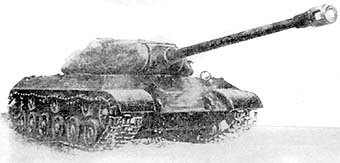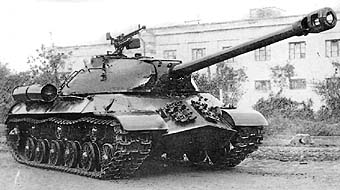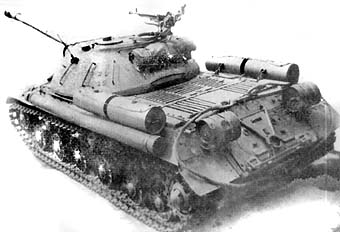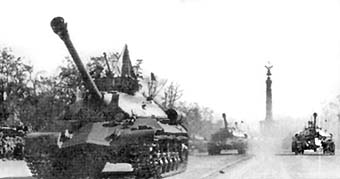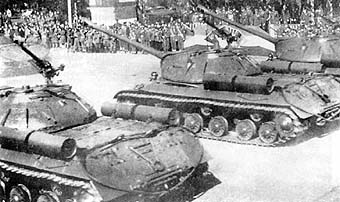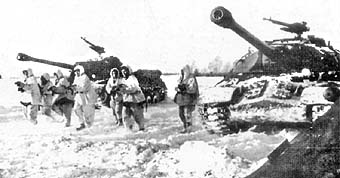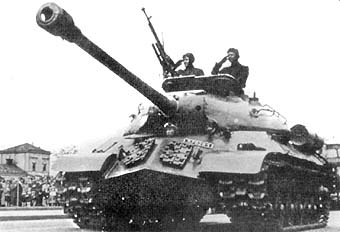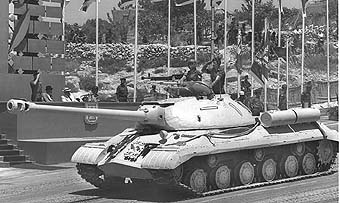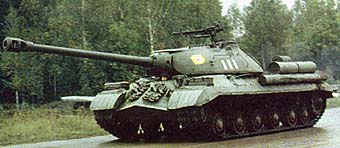| Language |
|---|
| Google Translation |
|---|
|
|
| Main Resources | |||||||||
|---|---|---|---|---|---|---|---|---|---|
|
| Additional Stuff | ||||
|---|---|---|---|---|
|
| Online Services | ||
|---|---|---|
|
| Miscellaneous | |||||||
|---|---|---|---|---|---|---|---|
|
| Private messages |
|---|
|
You are not logged in. |
| Log in |
|---|
| Users online |
|---|
| We have 8 guests online |
| Search |
|---|

| JS-3 Heavy Tank |

|

|
JS-3 Heavy Tank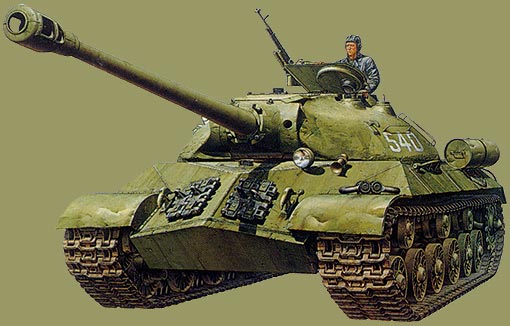
The new "Kirovets-1" heavy tank project commenced in summer 1944. This project was undertaken after a detailed examination was performed of the types and locations of battle damage inflicted by German antitank weapons on Soviet armored vehicles. There were, in fact, two different heavy tank projects being developed under two competing engineering groups: one group led by J.Y. Kotin and A.S. Ermolaev, and the other group led by N.L. Dukhov and M.F. Baldji. The first project was based on Objects #244, #245, and #248. The main feature of this project was the unusual frontal armor (glacis). It consisted of two plates welded at an angle, which sloped down from the center on both sides. Designers called this feature a "pike's nose", while western sources call it simply a "Pike."
All previous tanks had flat frontal armor built from a single plate. The old version had two crewmen at the front of the tank: the driver and the radio operator. By removing the radio operator's position, the driver could be relocated to the center. This allowed the tank designers to reconfigure the sides of the glacis, creating two sloping "cheek-bones." The sloping armor reduced the tank's weight and essentially strengthened the hull from the front. Moreover, it was hoped that the sloping geometry would withstand enemy fire better. The hull of the JS-3 was welded as opposed to being cast, as most foundries were already occupied with the manufacture of turrets for the JS-2 and the T-34. At the same time, the latest advances in welding technology allowed for welded hulls of robust construction. The second project was noted for its unusually rounded turret, fitted with a powerful 122 mm D-25T gun. This rounded turret, shaped like an inverted soup bowl, resembles modern Soviet turret design. The sloped shape deflected enemy armor-piercing shells more effectively than earlier slab-sided designs. Moreover, the turret's good internal layout minimized its dimensions while allowing its armor protection to be increased to 250 mm (the JS-2, by contrast, had only 100 mm). Both projects were shown to V.A. Malyshev (Minister of Tank Industry). The first project was shown by J.Y. Kotin, the second one was shown by I.M. Zaltsman and N.L. Dukhov. After detailed examination of both projects, Malyshev wisely decided to combine the best features of each. He ordered the turret from the second project to be placed on the hull of the first project. The weight of the new "hybrid" tank remained unchanged. The new tank was intended as a heavy breakthrough tank. In October 1944, the first prototype named "Object 703" was shown to G.K. Zhukov and A.M. Vasilevsky. They reported to Stalin about the new tank and Stalin signed an order to accept the new tank for service. After those trials, the "Object 703" was shown to G.K.Zhukov and A.M.Vasilevsky. They reported to Stalin about the new tank and Stalin signed an order to accept the new tank in service. The JS-3 heavy tank (or its working "Object 703" designation) as approved, boasted a very good hull and turret, with excellent armor protection. The sloped armor on the turret and hull allowed better overall protection of the tank. The rear armor plate was sloped rearwards. The centered driver's position was fitted with a sight-equipped hatch. Before opening the hatch, the sight had to be removed.
The semi-automatic 122 mm main gun was fitted with a muzzle brake. The rate of fire was about two to three shots per minute. Like its predecessor, the JS-2, the JS-3 normally carried 28 shells: eighteen high-explosive fragmentation rounds, and ten armor-piercing rounds. This ammunition distribution suggests that infantry and other 'soft' targets were intended as the main targets for the JS-3. The JS-3 carried four internal steel fuel tanks with a total capacity of 450 litres. The fuel tanks sat in pairs on both sides of the engine. Furthermore, the JS-3 was equipped with four cylindrical external fuel tanks. These external fuel tanks each carried 90 litres, and were connected to the internal fuel tanks. The external fuel tanks were equipped with emergency release brackets in case of a fire or a sudden attack. 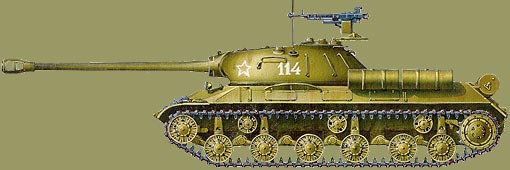 The JS-3 on military parade in Odessa. November 7, 1948.
The first test group of JS-3's left the factory gates in mid-May 1945. Despite western opinion (usually I hear about JS-3's seen on the streets of Vienna), JS-3 tanks weren't involved in battles on the Eastern Front. The participation of JS-3's in Far Eastern Front battles (in August 1945) is still unverified: at least one tank regiment of JS-3 tanks was sent, but Soviet combat records don't confirm any actual combat. On September 7, 1945, a united Allied military parade was held in Berlin. The parade began with infantry columns: Soviet soldiers of the 9th Rifle Corps of the 5th Shock Army, then soldiers of the French 2nd Infantry Division, Alpine troops, and Zoaves. There was a brilliant display by the British 131st Infantry Brigade. Paratroopers of the US 82nd Airborne Division brought up the rear. After a short break, a continuous mechanized column started. The first vehicles were 32 M24 "General Chaffe" tanks and sixteen M8 APC's from the US 705th Armored Battalion, and then tanks and armored cars from the French 1st Tank Division. After that, 24 "Comet" tanks and 30 armored cars from the British 7th Armored Division. And after that... rolled 52 of the newest JS-3's!!! That was a complete shock for all the Allies! A combined regiment of JS-3's was formed, based on the 71st Guards Heavy Tank Regiment (this unit is remembered as having fought with first King Tigers on the Eastern Front). In the USSR, the JS-3 was introduced during a military parade on November 7, 1946. For the sake of accuracy, I have to mention that the JS-3 tanks which participated in the military parade in Berlin were distinguishable from later models as they lacked containers (boxes) mounted along both sides of the hull.
The JS-3 was in mass production until mid-1946. Overall, there were 2,311 tanks produced. Unfortunately, at the beginning of its career, the JS-3 suffered from many serious problems related to design flaws. The most serious were: an unreliable engine, an extremely unreliable gear-box, and defective hull elements. Thus, in 1946, a special commission was formed which analyzed the deficiencies of the JS-3, and offered a Program of Modernisation and Improvement, also known as UKN (this abbreviation means "Ustranenie Konstruktivnykh Nedostatkov" - Fixing Construction Faults). During 1948 to 1952, all of the tanks were modernised. The engine and gear-box were strengthened, and the construction of the main friction clutch and side gears was improved. The roadwheels were replaced with new ones. The 10-RK radio was replaced with the more modern 10-RT. After all modifications, the weight of the JS-3 had increased to 48.8 tones. Despite all the changes and expenses of modernisation, the tank still had many deficiencies and remained unreliable.
At the end of the 1950's, the tank was modernised again and received a new designation: JS-3M. In fact, modernised tanks were more or less comparable with other Soviet and western tanks. Unfortunately, the JS-3 had had its day, and after the modernisation, all of the tanks were sent to storage areas and rarely used. JS-3 tanks were exported in limited numbers. In 1946, two tanks were sent to the Polish Army for evaluation and instructor training. Probably, the Poles planned to accept the JS-3 for service in the future. In 1950, one tank was sent to Czechoslovakia. China received many more tanks (they arrived after the Korean War). The Egyptian army received the first three JS-3's at the end of the 1950's. On June 23, 1956, JS-3's took part in a military "Independence Day" parade in Cairo, but most of Egypts' JS-3's were delivered from 1962 to 1967. The Israeli Army used captured JS-3's in the 1970's. The Israelis refitted the captured tanks' old V-54K-JS engines with more modern V-54's (taken from T-54's).
In conclusion, I have to mention that the technical parameters of the JS-3 were superior to its predecessor - the JS-2. Western experts also counted the JS-3 as a very successful tank design. Many ideas which were introduced in the JS-3 were used in many other tanks, both Soviet and western (including the M48 "General Patton," the Leopard-1, etc.) Unfortunately, the inherent drawbacks of the JS-3 weren't completely eradicated despite two expensive modernisation programs. Today, there are many surviving JS-3M's displayed as memorials and monuments. Unfortunately, there is only a single 'pure' JS-3 that is displayed in a Kubinka Tank Museum.  The Egyptian JS-3M. 4th Tank Division. 1967. 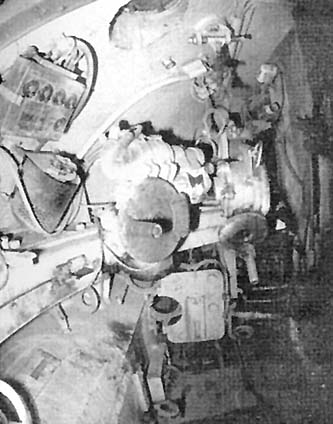 The turret: the gunner's station. 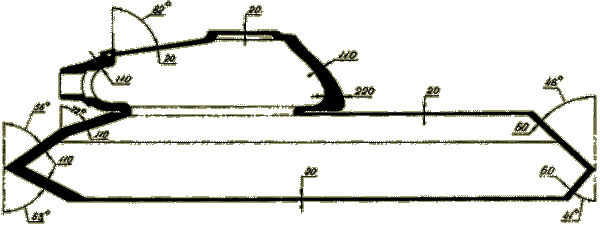 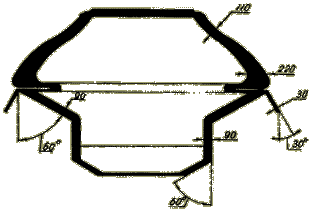
|
|||||||||||||||||
Discuss this item on the forums. (0 posts)
|
© The Russian Battlefield, 1998 Webdesign: |



